Body Condition Scoring And Performance
Body Condition Scoring is a method of assessing your horse's body fat coverage and should form part of your routine management plan. With practice, condition scoring is an accurate way of ensuring that your horse does not gain or lose too much body condition and shows results far more quickly than by the eye alone. This enables you to make any dietary adjustments before a problem has occurred. Whilst maintaining an optimum body condition score is of course essential to maintaining a horses overall health, research has found that it has an important role to play in supporting performance.
The Research
Research has suggested that there is a link between the body condition scores of horses competing in a variety of disciplines and how they then perform. In endurance horses, successful completions in a 160km race were highest in the group of horses with a body fat score of 5-5.5 on the 1-9 scale. Those with a score of 3 or less did not complete the race, whilst only 10% with a score of 3 were able to complete. Reasons given for withdrawal from the race included colic, heat exhaustion, lameness and metabolic issues such as exertional myopathies. The significant difference in condition scores in finishing and withdrawn horses provides a strong suggestion that there is an optimum level of body fat that may be required in order to provide sufficient fuel for the work being done during endurance competition (Garlinghouse, 1999).
Furthermore, in racehorses there is additional evidence to suggest that excess body condition will also influence athletic outcomes. Horses with a higher body fat content were slower overall, with race times increasing significantly in relation to body weight increases of more than 10kg (Cho et al, 2008). Racehorses who held lower fat scores were also able to consume more oxygen during exercise which was strongly correlated with better race times (Kearns, 2002).
Finally, additional research has further investigated the impact of obesity on the vertical force (VN) experienced in showjumping horses when landing after a fence. A higher amount of VN experienced can increase the risk of injury. For every body condition score increase (approximately 25kg), this was found to significantly influence the degree of force that was recorded within the hoof plate. For example, a 500kg horse with a Body Condition Score of 7 was found to experience an additional 722 Newtons of force on their landing limb (Clayton and Hobbs, 2019).
what is an optimum BODY CONDITION SCORE?
We are often asked ‘what is the optimum body condition score for my horse to be in?’
This can depend upon a number of factors, such as the type of work, the breed and health status of the individual horse. However, we do not want them too fat or too thin! As found, if they are too fat we significantly increase the risk of metabolic disease and laminitis, as well as putting excess strain on cardiovascular and musculoskeletal systems. If they are too thin they will have limited energy reserves and will prematurely fatigue and have longer recovery rates between training sessions. So as a general rule of thumb the aim is to have a horse in the region of a BCS of 5 or 5.5.
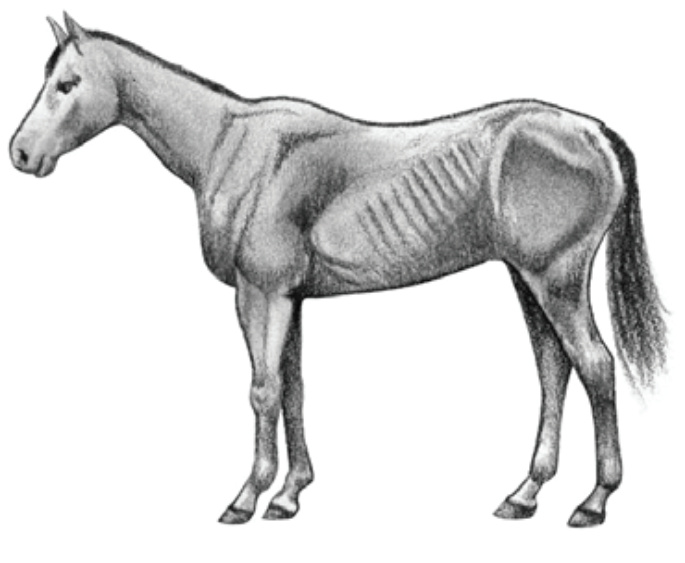
1. Poor
Animal extremely emaciated; spinous processes, ribs, tailhead, tuber coxae, and tuber ischii projecting prominently; bone structure of withers, shoulders, and neck easily noticeable; no fatty tissue can be felt.
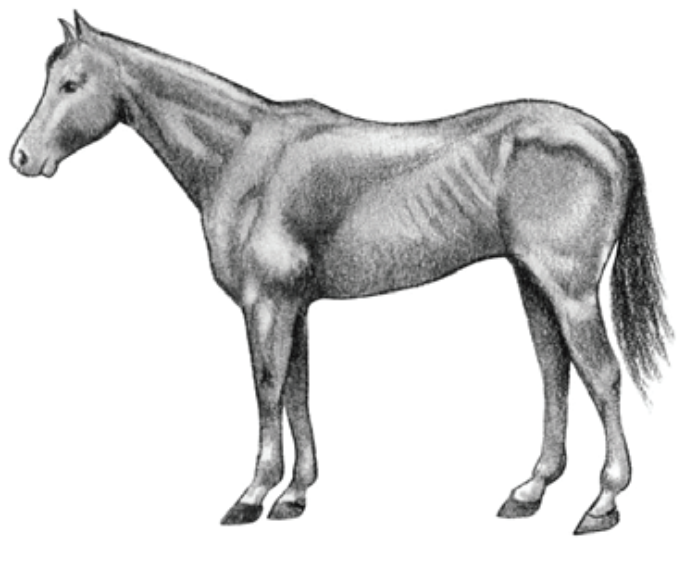
2. VERY THIN
Animal emaciated; slight fat covering over base of spinous processes; transverse processes of lumbar vertebrae feel rounded; spinous processes, ribs, tailhead, tuber coxae, and tuber ischii prominent; withers, shoulders, and neck structure faintly discernible.
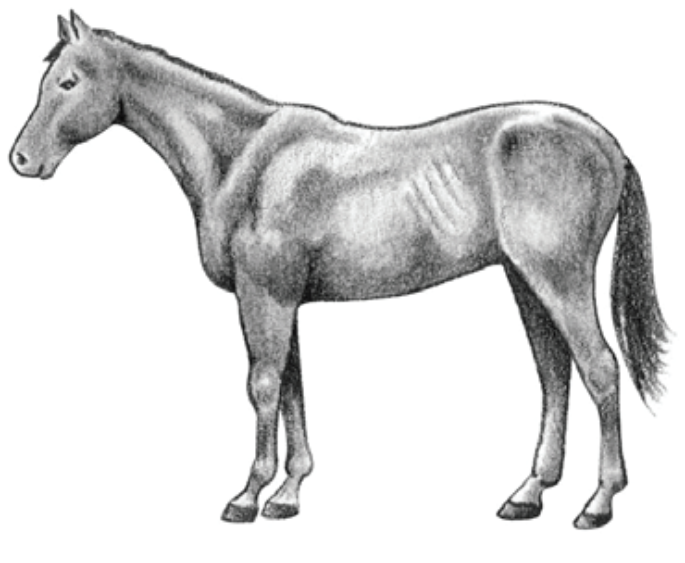
3. THIN
Fat buildup about halfway on spinous processes; transverse processes cannot be felt; slight fat cover over ribs; spinous processes and ribs easily discernible; tailhead prominent, but individual vertebrae cannot be identified visually; tuber coxae appear rounded but easily discernible; tuber ischii not distinguishable; withers, shoulders, and neck accentuated.

4. MODERATELY THIN
Slight ridge along back; faint outline of ribs discernible; tailhead prominence depends on conformation, fat can be felt around it; tuber coxae not discernible; withers, shoulders, and neck not obviously thin.

5. MODERATE
Back is flat (no crease or ridge); ribs not visually distinguishable but easily felt; fat around tailhead
beginning to feel spongy; withers appear rounded over spinous processes; shoulders and neck blend smoothly into body.
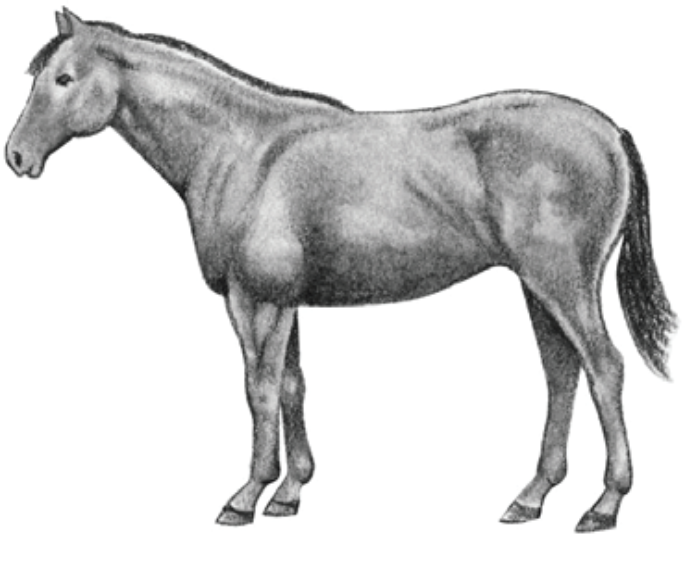
6. MODERATELY FLESHY
May have slight crease down back; fat over ribs fleshy/spongy; fat around tailhead soft; fat beginning to be deposited along sides of withers, behind shoulders, and along sides of neck.
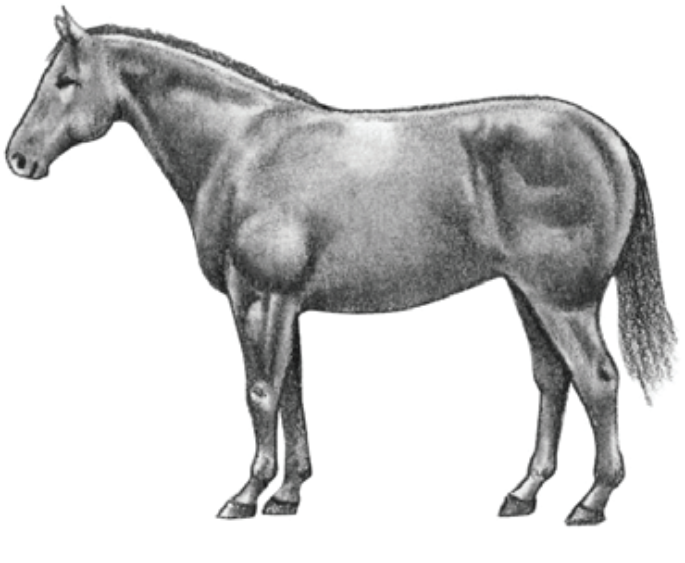
7. FLESHY
May have crease down back; individual ribs can be felt, but noticeable filling between ribs with fat; fat around tailhead soft; fat deposited along withers, behind shoulders, and along neck.
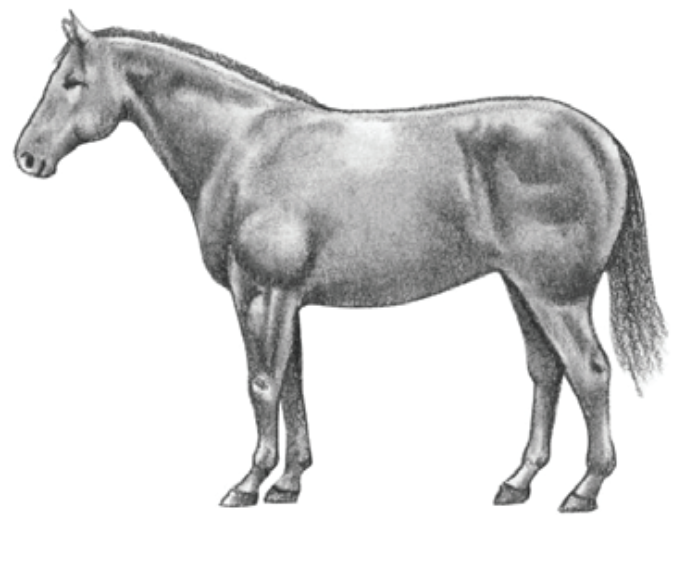
8. FAT
Crease down back; difficult to feel ribs; fat around tailhead very soft; area along withers filled with fat; area behind shoulder filled with fat; noticeable thickening of neck; fat deposited along inner thighs.
9. Extremely Fat
Obvious crease down back; patchy fat appearing.
Quick Feed Finder
Use our quick and easy feed finder as a guide to select the right feed for your horse or pony.
Feed Advice Form
Complete our online form to receive a detailed nutritional plan for your horse or pony from one of our registered nutritionists.












